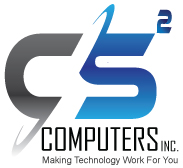Cloud & On Premise Computing: A Tailored Approach to IT Infrastructure

In today’s rapidly evolving technological landscape, businesses are constantly faced with the decision of whether to opt for cloud computing, on-premise solutions, or a hybrid approach. The choice between cloud & on premise computing can significantly impact an organization’s IT infrastructure and overall operations. By understanding the basics of each option and assessing the unique advantages of each, businesses can tailor their approach to meet their specific needs and objectives.
Understanding the Basics of Cloud & On-Premise Computing
Cloud computing transforms traditional IT infrastructure by harnessing the power of the internet to offer businesses a diverse array of computing services, from storage solutions to computational power, without the need for physical hardware on-site. This model enables companies to access and utilize IT resources on demand, paying only for what they use, which can lead to significant cost savings and operational efficiency. Conversely, on-premise computing keeps the IT infrastructure within the confines of an organization’s own facilities. This traditional approach means that a business owns and operates its servers, storage, and network systems, offering a higher level of control and direct access to its data and resources.
One of the key distinctions between cloud and on-premise computing lies in their deployment models. Cloud services are delivered over the internet, allowing for immediate scalability and flexibility that can adapt to changing business needs. This model supports remote access, enabling employees to work from anywhere, provided they have internet connectivity. On the contrary, on-premise computing demands that businesses invest in and maintain their own hardware and software, which can result in higher initial costs and ongoing maintenance tasks. However, this investment al
lows for an IT environment that’s tailored to specific operational requirements and offers tighter control over security, potentially making it the preferred option.
The choice between cloud and on-premise computing should be decided upon by a company’s specific requirements, including their budget, scalability needs, and data security needs. Understanding the foundational differences between these two approaches is crucial for businesses aiming to craft an IT infrastructure that aligns with their strategic goals and operational demands.
The Advantages of Cloud Computing for Modern Businesses
One of the hallmark advantages of cloud computing is scalability. Companies can expand or reduce their computing resources in response to fluctuating business needs, ensuring they are never paying for more than they actually require. This scalability allows businesses to respond to market changes with greater speed and efficiency.
Software updates are handled automatically and critical applications are patched and maintained by the respective service provider. On-premise, legacy systems can become more susceptible to a security breach if the owner is not paying for software upgrades and is running an unsupported application.
Cost savings is another huge benefit, as the cloud model eliminates the need for substantial spending on things like hardware and data center facilities. Instead, businesses can operate on a pay-as-you-go basis, converting what would have been a fixed cost into a variable one that aligns more closely with actual usage. This shift not only frees up capital for other company investments but also reduces the risk associated with large-scale IT investments.
Security, Control, and Performance of On-premise computing
On-premise computing offers distinct benefits that make them particularly appealing for organizations who must prioritize control and a more tailored configuration. In industries where data security is non-negotiable, such as healthcare, finance, and government, the physical possession of servers and systems provides an added layer of protection. These organizations can implement and enforce their own security protocols, ensuring compliance with stringent regulatory standards without relying on third-party vendors.
The control that comes with on-premise infrastructure cannot be understated. Companies gain full authority over their IT environment, allowing for custom configurations that precisely match their operational needs. This level of control extends to system updates and maintenance schedules, which can be planned to minimize disruption to critical business processes.
Performance is another arena where on-premise setups excel. By hosting their own infrastructure, businesses can design their systems to meet specific performance benchmarks without the latency that can sometimes occur with cloud services due to their reliance on internet connectivity. For operations that demand real-time data processing or have high transaction rates, the immediacy provided by on-premise solutions can be a significant advantage.
Hybrid Models: Combining the Best of Both Worlds
A hybrid computing approach presents a tailored approach to the unique demands of each business. This model permits companies to harness the cloud’s scalability and cost-efficiency for general computing needs while retaining on-premise systems for applications where control, security, and performance are paramount. By allocating resources between cloud services and on-site infrastructure, businesses can create a flexible, responsive IT environment that supports both dynamic growth and vital security requirements.
Integrating a hybrid model involves careful planning to ensure that workloads are optimally distributed to meet both operational efficiency and compliance standards. For instance, sensitive data can be processed and stored on-premise to comply with regulatory demands, while less sensitive, scalable workloads can be migrated to the cloud to benefit from its elasticity. This strategy enables businesses to not only protect their critical assets but also to innovate and scale with the changing market demands.
CS2 Computers began providing services over 20 years ago when on-premise systems were the most viable option for businesses, including internally-hosted email and web servers. We adapted many years ago to help clients take advantage of cloud applications and services, save money and minimize downtime, all while improving performance and productivity. We can help your business implement a cost-effective, secure and efficient Hybrid IT Infrastructure.
